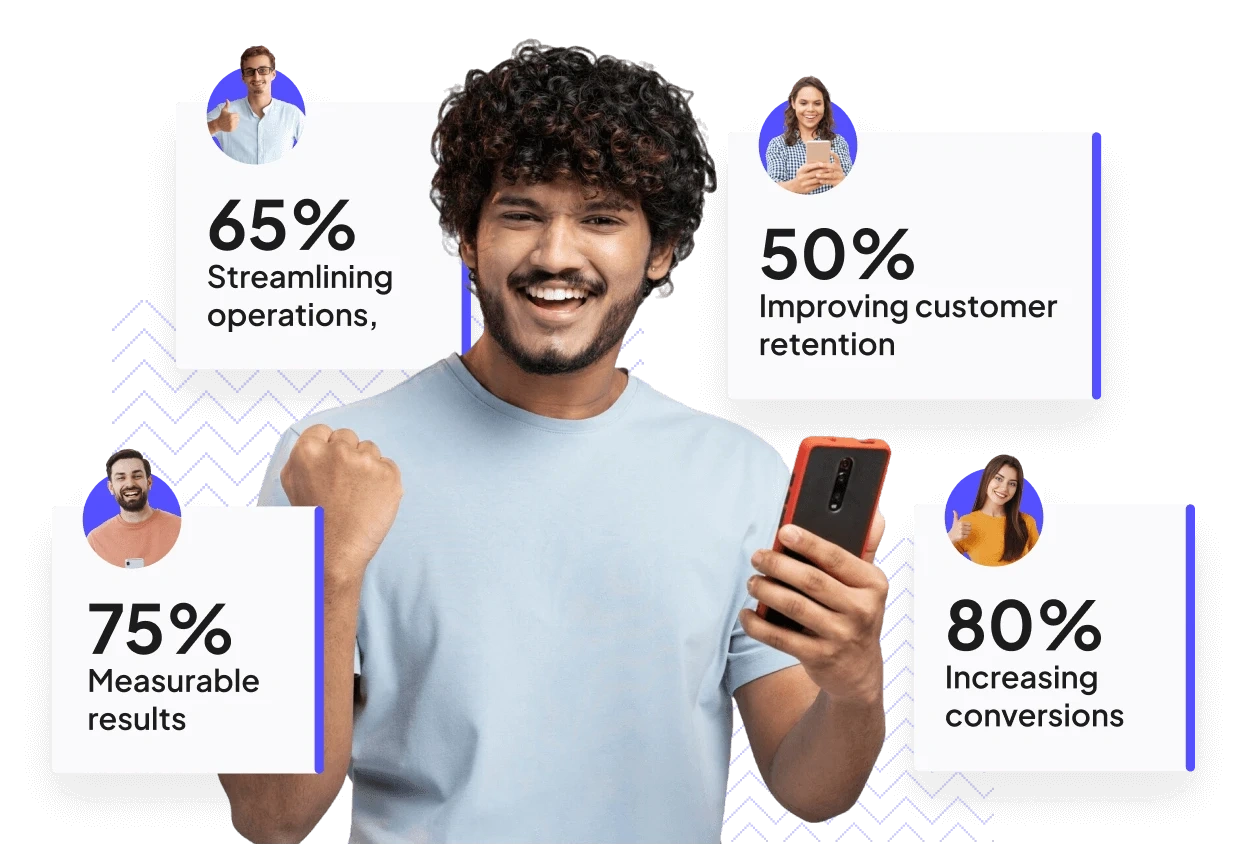Code generation is a revolutionary technique that is particularly useful in the dynamic field of software development. It increases efficiency, lowers mistakes, and frees up developers to work on more intricate and imaginative elements of developing applications by automating monotonous coding processes. Looking ahead, we see several new developments and forecasts that point to further evolution and industry transformation in code creation. This in-depth article explores these trends and their possible effects, offering a complete look at what lies ahead for code creation.
With the advancement of these technologies throughout time, whole codebases may now be automatically created from high-level specifications. The most advanced code development tools available today employ artificial intelligence (AI), machine learning (ML), and other cutting-edge technologies to produce highly optimized and error-free code.
Important Developments in Code Generation
1. AI-Powered Code Generation
The creation of code powered by AI is a major advancement. Artificial intelligence (AI) has the capacity to interpret plain language descriptions and produce comparable code, as shown by tools like FAB Builder, GitHub Copilot, and OpenAI’s Codex. Large-scale language models trained on huge amounts of code from public sources are used by these methods.
Example:
Predictions:
- Greater Accuracy and Productivity: Upcoming AI models will have more accuracy and efficiency, allowing them to produce more intricate and useful code with fewer mistakes.
- Integration with IDEs: Real-time code suggestions and improvements will be provided by AI-driven code generation tools that are becoming extensively incorporated into Integrated Development Environments (IDEs).
- Better Cooperation: AI will work together with human developers more and more to provide faster and more dependable development cycles by recognizing problems, making optimization suggestions, and even reworking code.
FAB Builder is at the forefront of AI-powered code generation. It automates repetitive tasks, allowing developers to focus on creative and complex challenges. With FAB Builder, you can quickly generate optimized, error-free code from plain language inputs, significantly reducing coding time and increasing productivity.
2. Platforms with No-Code and Low-Code
Platforms with little or no coding are making software creation more accessible. These platforms make it possible for users with little to no programming skills to construct useful apps by offering pre-built components and visual interfaces.
Predictions:
- Increased Industry Adoption: As these platforms gain strength, more companies will use them, especially for creating internal tools, prototypes, and basic applications.
- Sophisticated Applications: As a means of bridging the gap between low-code solutions and traditional development, future platforms will facilitate the creation of applications with greater functionality
- Hybrid Solutions: By integrating standard development environments, low-code platforms may manage fundamental functions while seasoned developers prioritise on creating unique features.
FAB Builder offers code generation that streamlines the development process. With FAB Builder, even non-technical users can build functional applications, while developers can enhance these applications with custom features, enabling faster and more efficient project deliveries.
3. The Model-Driven Approach (MDD)
Creating abstract models that automatically create code is known as “model-driven development,” or MDD. This method frees developers from having to worry about minute code details and increases efficiency while maintaining consistency across apps.
Example:
From this model, a code generation tool could generate a complete user management system in the chosen programming language.
Predictions:
- Business Adoption: As productivity and consistency are critical, MDD will be used increasingly frequently in large-scale business applications.
- Better Tools and Frameworks: The creation of better tools and frameworks will increase accessibility to MDD and enable developers to produce, validate, and verify models more quickly.
- Quality Assurance: To guarantee the accuracy and quality of produced code, more focus will be placed on model validation and verification.
FAB Builder supports model-driven development by enabling developers to create high-level models that generate consistent, ready-to-deploy code. This approach accelerates development cycles and ensures code uniformity, especially for large-scale applications.
4. Integration of DevOps
Code generation tool interaction with DevOps processes is becoming more and more important. This interface streamlines the whole software development lifecycle by ensuring that produced code complies with best practices for deployment, monitoring, and maintenance.
Predictions:
- Seamless CI/CD Integration: In order to allow automated testing, deployment, and upgrades, future code generation tools will be designed to connect smoothly with Continuous Integration/Continuous Deployment (CI/CD) pipelines.
- Automated Testing and Deployment: To increase dependability and decrease the need for manual intervention, generated code will go through automated testing and deployment procedures.
- Collaboration Development: More effective and efficient software delivery will result from improved cooperation between the development and operations teams.
5. Give Security First Priority
The security of code developed is becoming increasingly important as code production becomes more prevalent. Automatic detection of vulnerabilities and the integration of security best practices will be given top priority in future methods.
Predictions:
- Built-in Security Features: Tools for generating code will have security features integrated into them that automatically follow security best practices.
- Automated Code Reviews: Static analysis and automated code reviews are among the tools that will be used to find and address vulnerabilities before release.
- Collaboration with Security Experts: To create secure coding standards for produced code, there will be more interaction between developers and security experts.
6. Customisation and Adaptability
Individualization and extensibility will be prioritized in code generation in the future, enabling developers to match produced code to particular requirements and standards.
Predictions:
- Code Generation Frameworks: As code is generated, developers will be able to quickly customize and expand it thanks to the increasing modularity of these frameworks.
- Better Library and Framework Integration: Thanks to the improved library and framework integration provided by the tools, third-party components may be included with ease.
- User-Friendly Interfaces: In the future, tools will include interfaces that are easy to use to define specific rules for code generation, which will make it simpler for developers to explain their needs.
FAB Builder offers extensive customization options, allowing developers to adjust and extend generated code to suit project-specific needs. Its intuitive interface simplifies the process of defining rules, making it an adaptable solution for diverse projects.
7. Developing Code for New Technologies
Specific code-creation tools will be needed for emerging technologies like blockchain, Internet of Things (IoT), and quantum computing. The development process for cutting-edge apps will be made simpler by these technologies.
Predictions:
- Quantum Computing: To make it easier for developers to design quantum applications, specialized code-generating tools for quantum computing algorithms will be developed.
- Blockchain Applications: Smart contracts and other blockchain-based application development will be made easier with the help of tools that guarantee efficiency and security.
- IoT Development: As automated code production for IoT devices proliferates, it will make it easier to create effective and compatible IoT solutions.
The Code Generation Landscape of the Future
The code creation landscape will shift considerably when these developments materialize. The following are some general forecasts for the future:
1. Increased Innovation and Productivity
Productivity will rise dramatically when low-code/no-code platforms, AI, and MDD are combined. More time will be spent on innovation by developers rather than tedious coding chores, which will result in the development of more sophisticated and feature-rich apps.
2. Software Development Is Becoming More Democratic
The emergence of low-code and no-code platforms is poised to democratize software development by making application creation accessible to those with limited technical expertise. Increased innovation and the ability for businesses to swiftly respond to business demands with tailored software solutions are two benefits of this democratization.
3. Greater Cooperation
Teamwork across development, operations, and security departments will improve with the use of AI-driven technologies and DevOps integration. Higher-quality software, quicker development cycles, and more effective processes are all results of this enhanced collaboration.
4. Prioritising Security
Code creation will increasingly incorporate security as a core component. To guarantee that the generated code is reliable and safe, future tools will place a high priority on security and include automatic detection of vulnerability and recommended procedures.
5. Focus on New and Emerging Technologies
Cutting-edge application development will be made easier with specialised code-generating tools for new technologies. These technologies will enable developers to produce creative solutions in fields like blockchain, IoT, and quantum computing.
To Sum Up
Code generation has a bright future ahead of it, as several new developments and trends are expected to change the face of software development. Developers and organizations may fully utilize code generation by adopting AI-driven code generation, low-code/no-code platforms, model-driven development, DevOps integration, and increased security measures. Code generation will become an essential component of the software development lifecycle as these trends continue to grow, fostering creativity, productivity, and quality in the creation of applications.
Ready to experience the future of code generation? Try FAB Builder today and revolutionize your development process with a cutting-edge platform designed for efficiency and innovation.
Frequently Asked Questions
1. What is code generation?
Code generation is an automated process where programming code is generated by tools or platforms from high-level specifications, significantly reducing manual coding efforts.
2. How does AI improve code generation?
AI-powered tools analyze natural language descriptions or patterns to generate optimized, error-free code, enhancing productivity and reducing errors in the development process.
3. What are low-code and no-code platforms?
These are development platforms that allow users to create applications with minimal or no coding, often using drag-and-drop interfaces and pre-built components.

